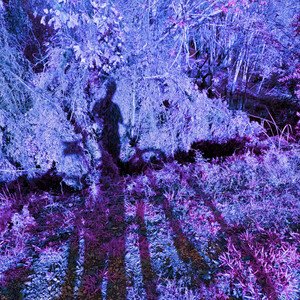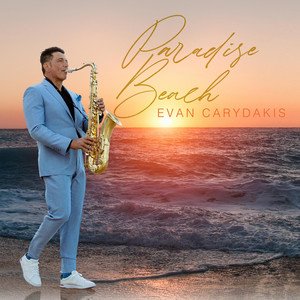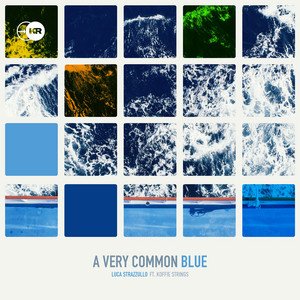Jazz Music ⁞ New Releases⁞ Artist Interviews⁞ Music News
Introduction of Jazz Music
Jazz is a genre of music that originated in the African-American communities of New Orleans, United States, in the late 19th and early 20th centuries. It is characterized by its use of improvisation, complex harmonic structures, and a wide range of musical influences, including blues, gospel, and European classical music. Jazz is known for its swing rhythm, which is created by the use of syncopated rhythms and a strong pulse. It is often played by small ensembles, such as a quintet or sextet, and is known for its ability to adapt to a wide range of musical contexts and styles. Jazz has had a significant influence on many other genres of music, and has been an important part of the cultural fabric of the United States and the rest of the world for more than a century.
Jazz by Nagamag Playlist on Spotify
Jazz Featured Releases
James Richardson – Laura
“Удивительная джазовая композиция, которая погружает слушателя в мир романтики, эмоций и теплоты. Завораживающее звуковое зрелище с нежными, мягкими аккордами создаёт атмосферу уюта. Здесь нет ярких и выпуклых мелодий, есть только нежность и красота. Это идеальная музыка для того, чтобы расслабиться и погрузиться в свои мысли.”
“An amazing jazz composition that immerses the listener into the world of romance, emotions and warmth. The bewitching sound sight with delicate, soft chords creates a comfort atmosphere. There are no bright and convex melodies, there are only tenderness and beauty. This is the perfect music in order to relax and plunge into your thoughts.” *
“Μια εκπληκτική σύνθεση τζαζ που βυθίζει τον ακροατή στον κόσμο του ρομαντισμού, των συναισθημάτων και της ζεστασιάς. Το μαγευτικό ηχητικό θέαμα με λεπτές, μαλακές χορδές δημιουργεί μια ατμόσφαιρα άνεσης. Δεν υπάρχουν φωτεινές και κυρτές μελωδίες, υπάρχουν μόνο τρυφερότητα και ομορφιά. Αυτή είναι η τέλεια μουσική για να χαλαρώσετε και να βυθίσετε τις σκέψεις σας.” *
-Nagamag.com
The song “James Richardson – Laura” is released by Songs by James, LLC
Song Sources for “James Richardson – Laura”:
Spotify: open.spotify.com/track/3E624LqgvbMTFTaZnQ9bfI
Youtube: www.youtube.com/watch?v=5YafU515Oic
Apple Music: music.apple.com/us/album/laura/1683259803?i=1683259811
Deezer: www.deezer.com/track/2244739357
Yuphoric – Almighty Goyde
“Amazing jam session that takes us directly to the heart of jazz and it wonderful atmosphere. Vintage soul of the song is the foundation for its elegant themes and elegies. Shimmering collision of glam attitude, and brilliant guitar and trumpet playing.”
“Καταπληκτική συνεδρία μαρμελάδας που μας οδηγεί απευθείας στην καρδιά της τζαζ και της υπέροχης ατμόσφαιρας. Το Vintage Soul του τραγουδιού είναι το θεμέλιο για τα κομψά θέματα και τις ελιγίες του. Η λαμπερή σύγκρουση της στάσης Glam και η λαμπρή κιθάρα και η τρομπέτα παίζουν.” *
“Erstaunliche Jam -Session, die uns direkt ins Herz des Jazz führt, und es wundervolle Atmosphäre. Vintage Soul of the Song ist die Grundlage für seine eleganten Themen und Elegien. Schimmernde Kollision der glamourösen Haltung und brillantes Gitarre und Trompete spielen.” *
-Nagamag.com
Song Sources for “Yuphoric – Almighty Goyde”:
Spotify: open.spotify.com/track/03ca7SDdAqZl6u8BMMDlqu
Youtube: www.youtube.com/watch?v=3NE1MQVedM8
Max & The Mofos – I Left My Baby (For The Blues)
“An amazing homage to the early years of blues from the last centuries. Beautiful vocal and music behind them feels like a time capsule, opened for our own joy. Perfectly balanced harmonic structure, with wonderful instruments, from blissful piano themes and seductive trumpet, that leads this magnificent song. ”
“Ένα εκπληκτικό φόρο τιμής στα πρώτα χρόνια των Blues από τους τελευταίους αιώνες. Όμορφη φωνητική και μουσική πίσω τους αισθάνεται σαν κάψουλα χρόνου, που ανοίγει για τη δική μας χαρά. Η τέλεια ισορροπημένη αρμονική δομή, με υπέροχα όργανα, από ευτυχισμένα θέματα πιάνου και σαγηνευτική τρομπέτα, που οδηγεί αυτό το υπέροχο τραγούδι.” *
“Un increíble homenaje a los primeros años de blues de los últimos siglos. Hermosa vocal y música detrás de ellos se siente como una cápsula del tiempo, abrida para nuestra propia alegría. Estructura armónica perfectamente equilibrada, con instrumentos maravillosos, de temas de piano felices y trompeta seductora, que lleva a esta magnífica canción.” *
-Nagamag.com
The song “Max & The Mofos – I Left My Baby (For The Blues)” is released by YIB Recordings
Song Sources for “Max & The Mofos – I Left My Baby (For The Blues)”:
Spotify: open.spotify.com/track/3loUEd3RNud0h6TvDBTdm9
Apple Music: music.apple.com/us/album/i-left-my-baby-for-the-blues/1691252318?i=1691252319
Deezer: www.deezer.com/track/2316867635
Find Max & The Mofos on Socials:
TikTok: www.tiktok.com/@maxandthemofos
Latest Jazz discoveries
Poor in Spirit – Travis A. Shaw
Η αισιόδοξη και κεφάτη μελωδία φτιάχνει τη διάθεση σου και νιώθεις την χαρά να επανέρχεται μέσα σου. Το ύφος της σε καθησυχάζ... >>> Read full review & listen to the song on Nagamag #nujazz #jazztronica #travisashaw #unitedstates #nagamag #musicmagazine #musicreview #review
Aurelia – Kama Tala
Η κιθάρα και το σαξόφωνο σε μια απόλυτη μελωδική ένωση εκφράζουν τόσο επιδέξια τα συναισθήματα μας. Τα φωνητικά με τη δυναμικ... >>> Read full review & listen to the song on Nagamag #nujazz #jazztronica #indiepop #kamatala #nagamag #musicmagazine #musicreview #review
When the Ball Drops – Remek Kossacz
Οι όμορφες και παιχνιδιάρικες νότες της κιθάρας μας κάνουν να λικνιζόμαστε ευχάριστα απολαμβάνοντας το ποτό μας με την αγαπημ... >>> Read full review & listen to the song on Nagamag #funk #contemporaryrnb #rap #remekkossacz #poland #nagamag #musicmagazine #musicreview #review
Your Intuition – Cluster Of Three
Η υπέροχη και περιπετειώδης μελωδία σε ταξιδεύει σε μέρη ανεξερεύνητα και εξάπτει τη φαντασία σου. Τα γοητευτικά φωνητικά γεμ... >>> Read full review & listen to the song on Nagamag #nujazz #jazztronica #jazzfusion #clusterofthree #unitedstates #nagamag #musicmagazine #musicreview #review
Let Time Do Its Work – The Soulers
Υπέροχη μελωδία που σε μεταφέρει σε μια ανέμελη και ξέγνοιαστη ατμόσφαιρα και το πάρτι ξεκινά. Η διάθεση μας φτιάχνει από την... >>> Read full review & listen to the song on Nagamag #funk #nujazz #jazztronica #retrosoul #thesoulers #spain #nagamag #musicmagazine #musicreview #review
Departing – Conor Cantrell
Τα υπέροχα και εκλεπτυσμένα αγγίγματα της μελωδίας είναι μοναδικά. Πραγματικά, δημιουργούν μια απολαυστική ατμόσφαιρα ξεγνοια... >>> Read full review & listen to the song on Nagamag #nujazz #jazztronica #jazzfusion #jazz #conorcantrell #ireland #nagamag #musicmagazine #musicreview #review
Paradise Beach – Evan Carydakis
Το κέφι και η θετική ενέργεια επιστρέφουν. Με όρεξη και με το δροσερό άγγιγμα της η μελωδία μοιράζει τριγύρω την χαρά. Οι νότ... >>> Read full review & listen to the song on Nagamag #nujazz #jazztronica #jazzfusion #jazz #evancarydakis #australia #nagamag #musicmagazine #musicreview #review
A Very Common Blue – Luca Strazzullo x Koffie Strings
Smooth mood and easy listening sounds that are layered with her blissful lead vocal. Mixture of styles are done so well withi... >>> Read full review & listen to the song on Nagamag #blues #lucastrazzulloxkoffiestrings #lucastrazzulloxkoffiestrings #italy #nagamag #musicmagazine #musicreview #review
Christmas At Home – The It City
С первых аккордов слушателя охватывает теплота духовых инструментов, которые, словно старый друг, приглашают в мир воспоминан... >>> Read full review & listen to the song on Nagamag #nujazz #jazztronica #jazz #electroswing #theitcity #unitedstates #nagamag #musicmagazine #musicreview #review
Some Jazz subgenres
There are many subgenres of jazz, and the boundaries between them can be somewhat fluid. Here are a few of the most common subgenres of jazz:
Dixieland jazz: Also known as “traditional” or “New Orleans” jazz, this style is characterized by its use of collective improvisation and a strong rhythm section, featuring instruments such as the trumpet, trombone, and clarinet.
Swing: This style emerged in the 1930s and 1940s and is characterized by its use of a swinging rhythm and big band instrumentation. It was popularized by bands led by musicians such as Duke Ellington and Benny Goodman.
Bebop: This style emerged in the 1940s and is characterized by its fast tempo, complex chord progressions, and extensive use of improvisation. It was popularized by musicians such as Charlie Parker and Dizzy Gillespie.
Cool jazz: This style emerged in the 1950s and is characterized by its use of complex harmonies and a laid-back, relaxed approach to rhythm. It was popularized by musicians such as Miles Davis and Dave Brubeck.
Fusion: This style emerged in the 1970s and is characterized by its incorporation of elements from other genres of music, such as rock, funk, and world music. It was popularized by musicians such as John McLaughlin and Chick Corea.
Smooth jazz: This style emerged in the 1980s and is characterized by its use of electronic instrumentation and a focus on melody and groove. It was popularized by musicians such as George Benson and Grover Washington Jr.
Hard bop: This style emerged in the 1950s and is characterized by its use of blues and gospel influences and its incorporation of elements from bebop and swing. It was popularized by musicians such as Horace Silver and Art Blakey.
Free jazz: This style emerged in the 1960s and is characterized by its use of extended improvisation and a lack of strict chord progressions or other formal structures. It was popularized by musicians such as Ornette Coleman and John Coltrane.
Latin jazz: This style is characterized by its incorporation of Latin American rhythms and melodies, as well as its use of percussion instruments such as congas, timbales, and bongos. It was popularized by musicians such as Tito Puente and Cal Tjader.
Acid jazz: This style emerged in the 1980s and is characterized by its incorporation of elements from funk, soul, and hip hop, as well as its use of electronic instrumentation. It was popularized by musicians such as Brand New Heavies and Jamiroquai.
Jazz-rock: This style emerged in the 1970s and is characterized by its incorporation of elements from rock music and its use of electric instruments. It was popularized by musicians such as Mahavishnu Orchestra and Weather Report.
Jazz-funk: This style is characterized by its incorporation of elements from funk music and its use of electric instruments and groove-based rhythms. It was popularized by musicians such as James Brown and George Clinton.
As with any genre of music, these subgenres are just a few of the many that exist within the broader category of jazz. There are many other styles and variations within jazz.
The most used instruments in Jazz Music
There are many different instruments that are commonly used in jazz music, and the specific instruments used can vary depending on the style and context of the music. Here are a few of the most common instruments used in jazz:
Piano: The piano is a common instrument in jazz music and is often used to provide the harmonic foundation for the music. Jazz pianists may use a range of techniques, including comping (providing chordal accompaniment), soloing (performing a melodic solo), and improvising (creating music spontaneously).
Drums: The drums are an important part of the rhythm section in jazz music and are often used to create a swinging or groove-based feel. Jazz drummers may use a range of techniques, including various stick and cymbal patterns, to create complex rhythms and interactive interactions with other musicians.
Bass: The bass is another important part of the rhythm section in jazz music and is often used to provide the foundation for the music. Jazz bassists may use a range of techniques, including walking bass lines (a repeating pattern of notes played over the chord progression of a song) and soloing, to create a strong rhythmic and melodic foundation for the music.
Guitar: The guitar is often used in jazz music and can play a variety of roles, from providing chordal accompaniment to soloing. Jazz guitarists may use a range of techniques, including chord voicings (arrangements of notes in a chord), arpeggios (broken chords played one note at a time), and improvisation, to create complex and interesting musical textures.
Saxophone: The saxophone is a common instrument in jazz music and is often used to play melodies and improvise solos. Jazz saxophonists may use a range of techniques, including alternate fingerings, multiphonics (playing more than one pitch at a time), and circular breathing (a technique for continuous blowing), to create a wide range of sounds and textures.
Vocals: Vocals are often used in jazz music, and many jazz singers have made significant contributions to the genre. Jazz vocals can take many forms, ranging from scat singing (improvised vocalizations using nonsense syllables) to more traditional vocal styles such as singing with lyrics. Some famous jazz singers include Billie Holiday, Ella Fitzgerald, and Louis Armstrong, all of whom are known for their unique vocal styles and ability to improvise.
In addition to traditional vocals, many jazz musicians also use electronic effects and processing to manipulate their voices, creating a wide range of sounds and textures. Some jazz musicians, such as Bobby McFerrin and Gregory Porter, have made significant contributions to the genre using only their voices, without any accompanying instruments.
In jazz music, lyrics are often used in the same way as in other genres of music, to express emotions, tell a story, or convey a message. However, jazz lyrics may also be used to create a structure for improvisation or to provide a basis for scat singing, which is a form of vocal improvisation in which the singer uses nonsense syllables instead of actual words.
Jazz lyrics may also be more abstract and poetic than lyrics in other genres of music, and may use figurative language or symbolism to convey meaning. Jazz lyrics often reflect the social and cultural contexts in which the music was created, and may address themes such as love, loss, hope, and social or political issues.
Overall, vocals and the meaning of lyrics in jazz music depends on the context in which they are used and the intentions of the songwriter. They can be used to express emotions, tell a story, convey a message, or provide a structure for the music to follow.












